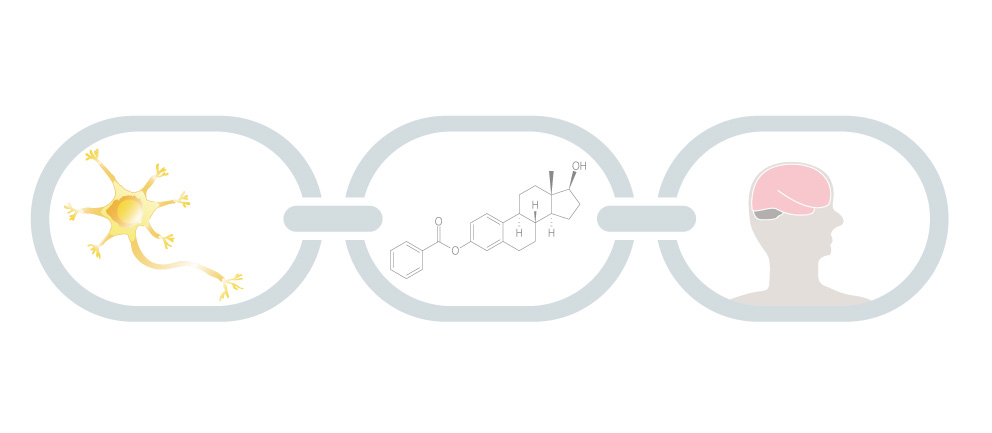
Research Activities
Research Activities
Publications
March 18, 2016
Estradiol promotes integration of iPSC-derived neurons for Parkinson's disease cell therapy

The use of midbrain dopaminergic (DA) neurons progenitor is a proven cell therapy for Parkinson's disease (PD). The challenge, however, is acquiring these cells and then successfully integrating them upon transplantation. The Jun Takahashi lab has dedicated itself to these problems using iPS cell technology. In its most recent publication, the team reports that a derivative of estradiol, an important female sex steroid, offers a pharmaceutical means to promote the integration of grafted cells derived from human iPS cells in rat brain.
The grafts are transplanted in the striatum of the brain. Therefore, to evaluate the effectiveness of the grafts, the authors looked at the activation of striatal neurons post transplantation. They found that successful innervation depended on the expression of integrin α5β1, which has a role in synaptogenesis and synaptic plasticity. Integrin α5β1 operates during development to promote cell adhesion with fibronectin, which could be a way to promote connection between the grafted and host cells. It is also activated via the reelin pathway, which can be modulated by estradiol. Accordingly, the authors experimented with the possibility of activating integrin α5β1 with estradiol-2-benzoate (E2B), finding that doing so further promoted the attachment of striatal neurons with fibronectin and synapse formation with the grafted cells.
Along with these physiological changes in rat brain, the authors also observed behavioral changes. Although all rats showed recovered rotational behavior, a standard measure of PD, with the transplantation of iPS cell-derived DA neuron progenitors, those that also received daily injections of E2B recovered much faster. "It is important to confirm that the rats too show improvement and not just the rat brains," explains Kaneyasu Nishimura, who first authored the report.
The realization that integrin α5β1 can improve cell therapy outcomes gives invaluable insight on the molecular mechanism in which PD cell therapies function. Other studies have suggested that integrin α5β1 levels are preserved in PD patients, giving hope that activating this molecule will provide therapeutic benefits in humans.
Paper Details
- Journal: Stem Cell Reports
- Title: Estradiol facilitates functional integration of induced pluripotent stem cell-derived dopaminergic neurons into striatal neuronal circuits via activation of integrin α5β1
- Authors: Kaneyasu Nishimura1, Daisuke Doi1, Bumpei Samata1, Shigeo Murayama2, Tsuyoshi Tahara3, Hirotaka Onoe3, Jun Takahashi1
- Author Affiliations:
- Department of Clinical Application, Center for iPS Cell Research and Application (CiRA),
Kyoto University, Kyoto, Japan - Department of Neuropathology, Tokyo Metropolitan Geriatric Hospital and Institute of Gerontology, Tokyo, Japan
- Bio-function Imaging Team, RIKEN Center for Life Science Technologies, Kobe, Japan
- Department of Clinical Application, Center for iPS Cell Research and Application (CiRA),






















